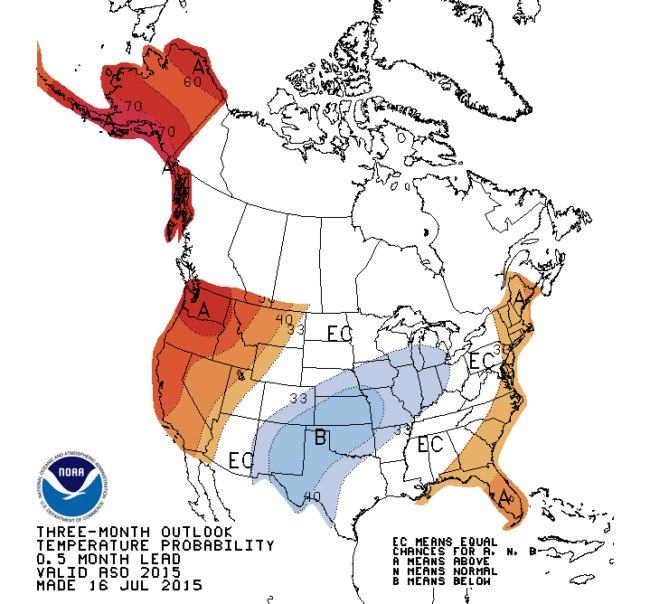
Climate experts say Southeast Alaska will likely be wetter and warmer over the next three months. The National Oceanic and Atmospheric Administration’s Climate Prediction Center just issued their three-month forecast that, for Alaska, is largely based on the continued warming of the Pacific Ocean.
The Alaska portion of the report was prepared by climatologist Rick Thoman with the NOAA in Fairbanks. Thoman believes there’s an increased chance of significantly higher precipitation for southern Alaska for the next three months. There’s also a greater chance of significantly above-average temperatures throughout most of the state.
For Juneau, the current forecast calls for a 65 percent chance that the temperatures will fall into that “significantly warmer than normal” category between now and the end of September.
“That still leaves us with about a one-third chance that they’ll fall into the ‘near normal’ category and just a very small, but non-zero chance that they’ll fall into the ‘significantly below normal,’” Thoman says. “That all, of course, assumes that the forecast is — in some statistical sense — correct.”
Thoman says they issue their climate predictions using probabilities instead of trying to predict that a particular region will get so many more inches of rain or that it will be so many degrees warmer.
“Just because the three-month average is ‘significantly above normal,’ doesn’t mean you can’t have a cold couple of weeks. As we move forward, that’s almost certain to happen. Even if precipitation winds up ‘significantly above normal,’ that doesn’t mean that you can’t have a dry spell or two in that three-month period. It’s not that every day is going to be warm. It’s just going to be on that long-term, average climate scale.”
Thoman says sea surface temperatures are important factors in their climate predictions for Alaska.
“The water, of course, holds heat much longer than the air so it’s slow to warm up, slow to cool down,” Thoman says. “That really serves as the memory for the whole climate system which is really kind of the linked ocean, atmosphere, cryosphere. So snow, ice, all of that plays into the climate forecast.”
“But the oceans, because of that big heat reserve, are a major driver in these very long term outlooks,” Thoman says.
The warmer ocean temperatures are caused by a combination of a strong El Niño event that started forming in the tropical Pacific, the cyclic ocean pattern called Pacific Decadal Oscillation and the warm water anomaly called “The Blob” that now stretches from the Gulf of Alaska down to California.
Scientists suspect that recent algae blooms off the Pacific Northwest Coast and in the North Pacific may have been caused by warmer ocean temperatures.
